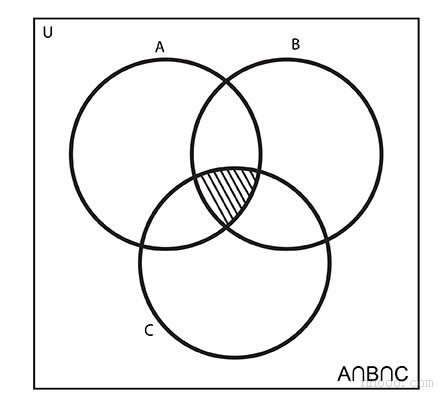Python 基础教程
- Python 简介
- Python 入门
- Python 关键字和标识符
- Python 语句,缩进和注释
- Python 变量,常量和字面量
- Python 数据类型
- Python 类型转换
- Python 输入,输出和导入
- Python 运算符
- Python 关键字列表
Python 流程控制
Python 函数
- Python 函数
- Python 函数参数
- Python 递归(Recursion)
- Python 匿名函数(Lambda)
- Python 全局,局部和非局部变量
- Python Global 关键字
- Python 模块
- Python 包(Package)
- Python 自定义函数
Python 数据类型
- Python 数字(Number)
- Python 列表(List)
- Python 元组(Tuple)
- Python 字符串(String)
- Python 集合(Set)
- Python 字典(Dictionary)
- Python 集合方法
Python 文件操作
Python 对象和类
Python 日期和时间
- Python 日期时间(datetime)
- Python strftime()
- Python strptime()
- Python 当前日期和时间
- Python 获取当前时间
- Python 时间戳( timestamp)
- Python time 模块
- Python sleep()
Python 高级知识
- Python 命名空间和作用域
- Python 迭代器
- Python 生成器
- Python 闭包
- Python 装饰器
- Python @property
- Python 正则表达式(RegEx)
- Python 随机模块(Random)
- Python 数学模块(Math)
- Python 数组
- Python main() 函数
- Python 字典理解
- Python 多态
- Python pip
- Python 矩阵和NumPy数组
Python 参考手册
Python 集合 intersection() 使用方法及示例
intersection()方法将返回一个新集合,其中包含所有集合相同的元素。
两个或更多集合的交集是所有集合相同的元素集合。例如:
A = {1, 2, 3, 4}
B = {2, 3, 4, 9}
C = {2, 4, 9 10}
那么,
A∩B = B∩A ={2, 3, 4}
A∩C = C∩A ={2, 4}
B∩C = C∩B ={2, 4, 9}
A∩B∩C = {2, 4}
Python中intersection()的语法为:
A.intersection(*other_sets)
intersection()参数
intersection()允许任意数量的参数(集合)。
注意: *不是语法的一部分。用于指示该方法允许任意数量的参数。
Intersection()返回值
intersection()方法返回集合A与所有集合的交集(作为参数传递)。
如果未将参数传递给intersection(),则它将返回集合(A)的浅拷贝。
示例1:如何intersection()工作?
A = {2, 3, 5, 4}
B = {2, 5, 100}
C = {2, 3, 8, 9, 10}
print(B.intersection(A))
print(B.intersection(C))
print(A.intersection(C))
print(C.intersection(A, B))运行该程序时,输出为:
{2, 5}
{2}
{2, 3}
{2}更多实例
A = {100, 7, 8}
B = {200, 4, 5}
C = {300, 2, 3}
D = {100, 200, 300}
print(A.intersection(D))
print(B.intersection(D))
print(C.intersection(D))
print(A.intersection(B, C, D))运行该程序时,输出为:
{100}
{200}
{300}
set()您还可以使用&运算符找到集合的交集
示例3:使用&运算符设置相交集
A = {100, 7, 8}
B = {200, 4, 5}
C = {300, 2, 3, 7}
D = {100, 200, 300}
print(A & C)
print(A & D)
print(A & C & D)
print(A & B & C & D)运行该程序时,输出为:
{7}
{100}
set()
set()